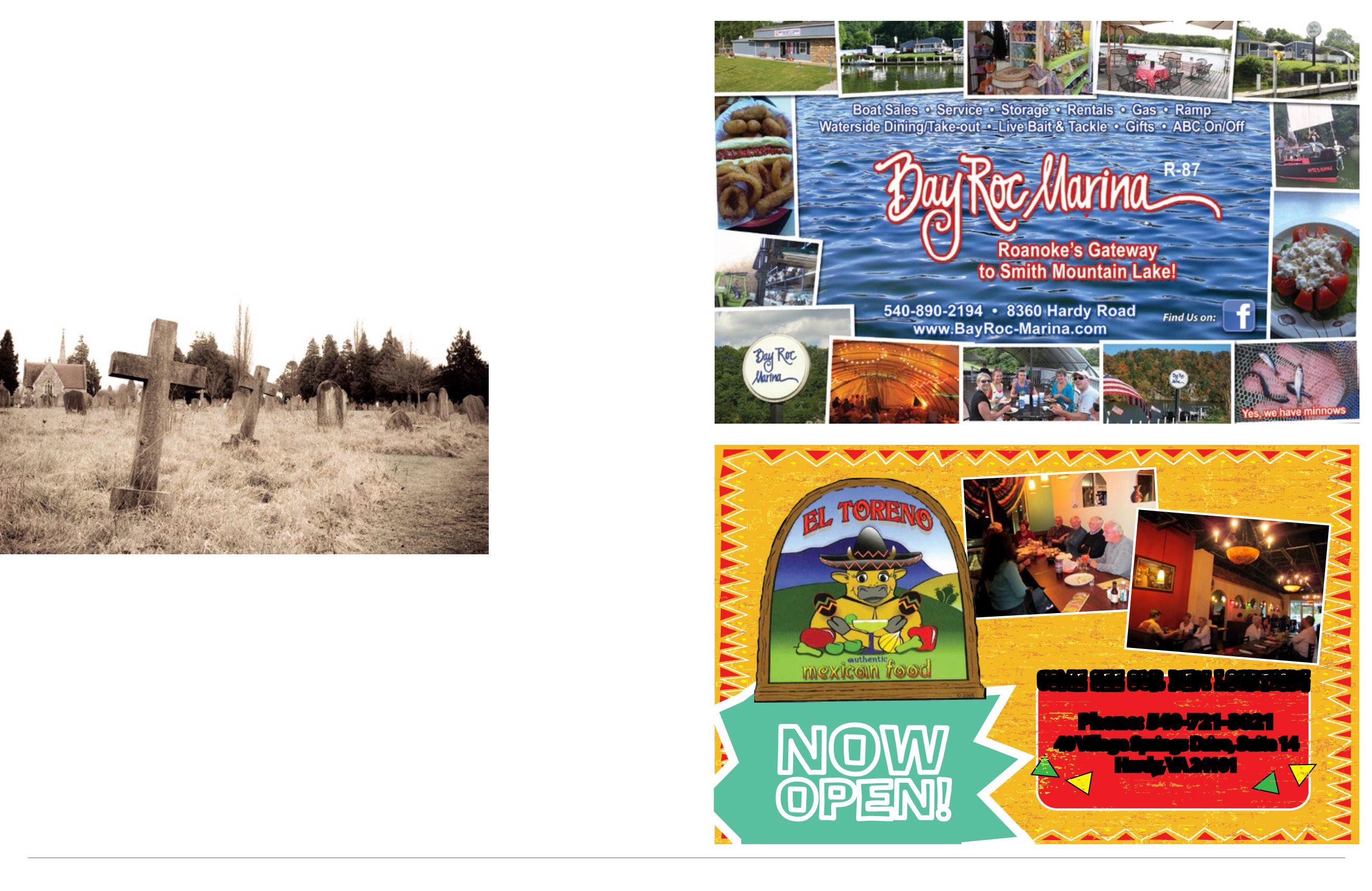
Discover Smith Mountain Lake
SUMMER 2016
21
20
Curtis O Roberson and HerbertTaylor, both employees
with APC, were assigned the monumental task of finding
and relocating all the graves that would be covered as Smith
Mountain Lake filled.When they first got their assignment,
they little realized what a help Periwinkle would be to them.
Roberson documented the entire experience in a 1963
report, a copy of which is in the Jones Memorial Library in
Lynchburg.All told, the two men found some 75 cemeteries
and relocated 1,361 graves to higher ground or at least out
of harm’s way.
According to an article by Suzanne Ramsey in Lynchburg
Living, the two men used the same procedures in relocating
graves that have been used by other power companies in
similar situations.They quickly learned, however, that
finding the cemeteries, many of which were long forgotten,
would be the most difficult task. For months they scoured
the forests and fields of Bedford, Franklin, and Pittsylvania
counties. Many times they had local residents with them as
they tromped over the terrain.They looked for headstones,
field-stones, depressed places in the earth – anything that
might indicate a burial site. Many of the oldest grave sites
were completely unmarked.
“Periwinkle proved to be a blessing in helping us find the
cemeteries,” Roberson wrote.Along the way the pair also
encountered their fair share of briers, ticks and snakes. Bees,
too, must have been a problem during the summer months.
“If anyone believes it is fun looking for graves in a rattlesnake
and tick infested area, he should try it sometime,” Roberson
wrote. “We were often bitten by ticks, but fortunately not
by a snake.”
Whenever they found a grave, the two men did their best to
identify the buried person.They drove more than 100,000
miles, and corresponded with next-of-kin across the US and
in Canada. Most next-of-kin requested that their ancestors
be moved, but in many cases the relationship was so distant
that they had little interest.
The grave project took two years to complete. Remains
were moved to about two dozen burial sites, most of which
were in the three-county area affected by the project. Most
remains were interred in church and family cemeteries.
The oldest of the graves
were estimated to be from
the 1750s. Many of the
dead were children, and
it is believed that some of
the relocated remains were
slaves, although most were
poor white people who, like
their forefathers, scratched a
living out of the land.
Family genealogists who are
looking for graves that were
relocated are likely to find
records of them in various
public libraries, including
those in Roanoke and
Lynchburg. One book, which
is entitled Smith Mountain Lake Cemetery Relocation
Project, was assembled by Beverly Merritt and published
by Jane Zarn, apparently derived from Roberson’s notes. In
his report, Roberson wrote about extensive evidence that
Native Americans once lived along the Roanoke and Black
Water Rivers. In their search for grave sites, he andTaylor
reportedly found pieces of pottery, arrowheads and other
relics. Locals told them about “old burial grounds” in the
area, but no Native American graves were unearthed or
moved.
Roberson died in 1994, and no reliable source for the
whereabouts of Taylor was found.
COME SEE OUR NEW location!
Phone: 540-721-3821
40Village Springs Drive, Suite 14
Hardy, VA 24101
NOW
OPEN!


